Enzyme Reaction Rate Temperature
Enzyme Reaction Rate Temperature. This time, the optimal temperature is clear. When the temperature increases beyond the optimum temperature, the rate decreases.
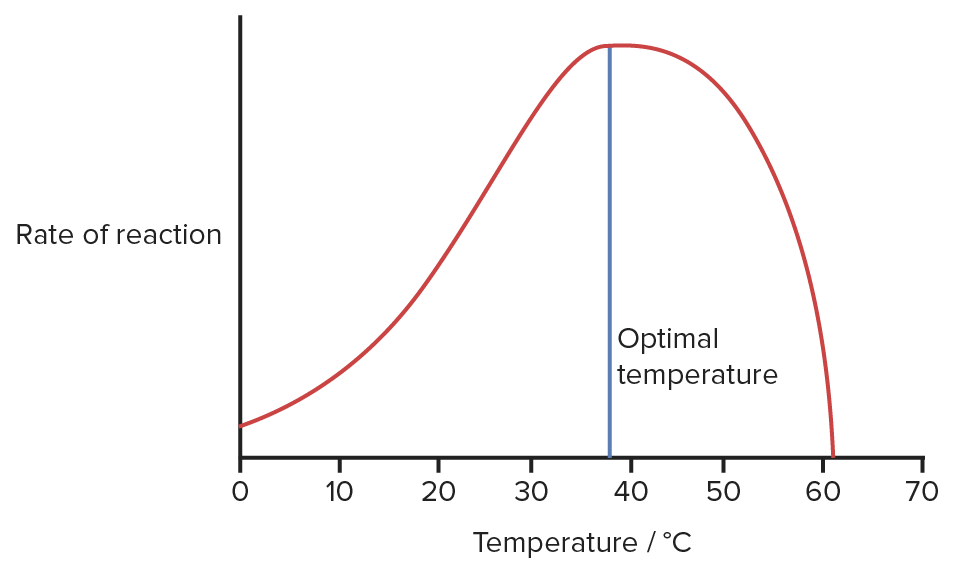
 Enzyme Concise Medical Knowledge from www.lecturio.com
Enzyme Concise Medical Knowledge from www.lecturio.comThere are several factors that can increase the rate of a reaction. This was tested using h2o2 (hydrogen peroxide), chicken liver, ice water, and hot water. Optimum temperature •each enzyme has a temperature that it works optimally in, which in humans is around 37 degrees celsius the normal body temperature for humans.
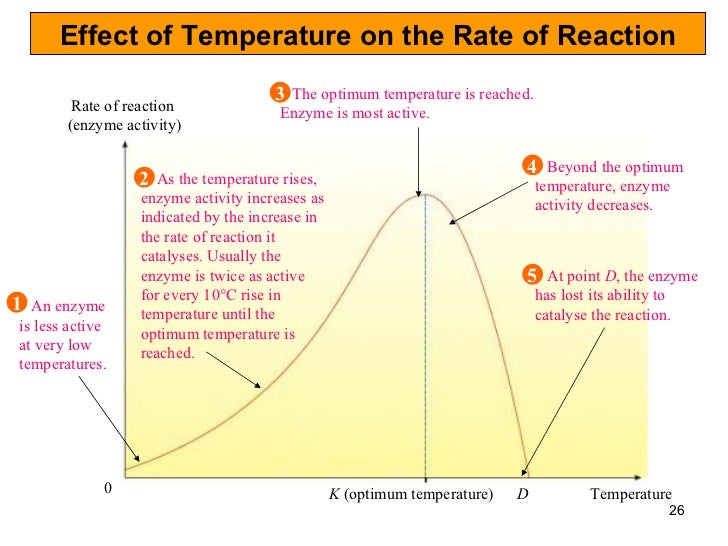
The temperature coefficient (q) for a reaction that follows this pattern is: Overview of enzyme reaction rate graphs for temperature, ph, substrat and enzyme

It is between temperatures 20 degrees celsius to 60 degrees celsius. The temperature at which the rate of enzyme catalyzed reaction is maximum is known as optimum temperature.

It is ultimately damaged by denature of an enzyme. One of the critical variables that determine the rate of any reaction is temperature.
Storage of enzymes at 5°c or below is generally the most suitable. A ten degree centigrade rise in temperature will increase the activity of most enzymes by 50 to 100%.
This is because humans maintain a body temperature of about 37°c, therefore even temperatures exceeding 40°c will cause the denaturation of enzymes; Temperature coefficient = (rate of reaction at (x + 10) °c) ÷ (rate of reaction at x °c)

Overview of enzyme reaction rate graphs for temperature, ph, substrat and enzyme There are several factors that can increase the rate of a reaction.
However, once a certain temperature is reached (approximately 40 degrees celsius for most enzymes) the rate of reaction decreases rapidly. There are several factors that can increase the rate of a reaction.
This is explained by macromolecular rate theory: A ten degree centigrade rise in temperature will increase the activity of most enzymes by 50 to 100%.

Raising the temperature can speed a reaction because the molecules have more energy and therefore bump into each other more frequently. Changing ph , temperature, and/or concentration of the substratum may alter the rate of chemical reactions.

Over a period of time, enzymes will be deactivated at even moderate temperatures. It is ultimately damaged by denature of an enzyme.
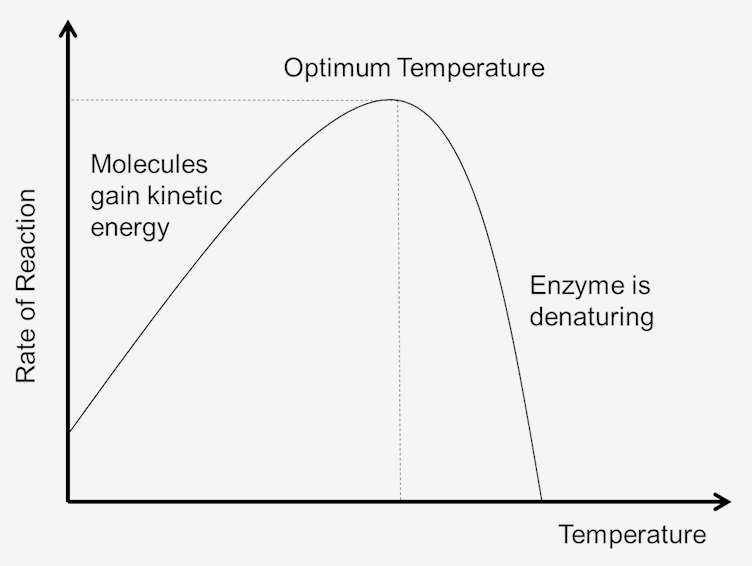
At higher temperatures, the protein is denatured, and the rate of the reaction dramatically decreases. This maximum is known as the temperature optimum of the enzyme.

The arrhenius activation energy, which describes the effect of temperature on the catalytic rate constant, k cat, and thermal stability, which describes the effect of temperature on the thermal inactivation rate constant, k inact. Overview of enzyme reaction rate graphs for temperature, ph, substrat and enzyme

Many enzymes show curvature in plots of activity versus temperature that is not accounted for by denaturation or unfolding. A ten degree centigrade rise in temperature will increase the activity of most enzymes by 50 to 100%.
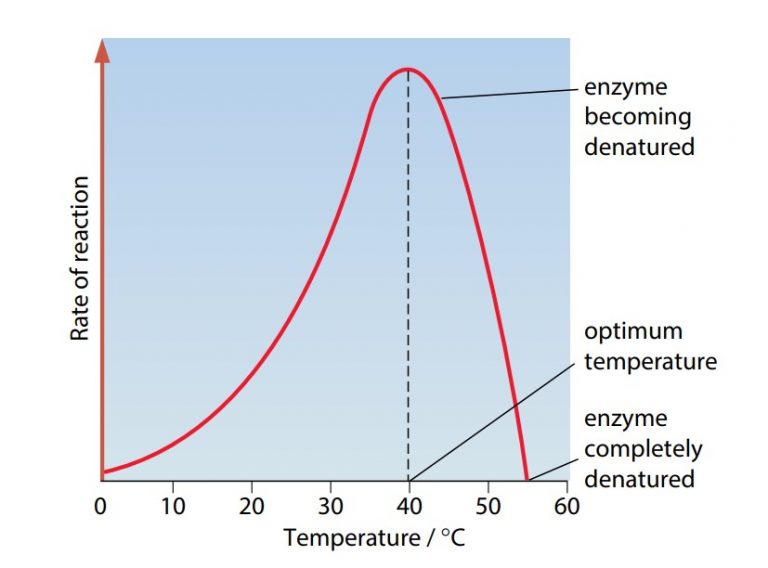
The temperature coefficient (q) for a reaction that follows this pattern is: Changing ph , temperature, and/or concentration of the substratum may alter the rate of chemical reactions.
This experiment is therefore carried out to make out the factors which may influence the activities of the enzymes in their work of catalyzing the rates of reactions in the body. However, some enzymes work really well at lower temperatures like 4 degrees celsius •and some work really well in higher temperatures like 95 degrees celsius.

Changing ph , temperature, and/or concentration of the substratum may alter the rate of chemical reactions. A ten degree centigrade rise in temperature will increase the activity of most enzymes by 50 to 100%.
Temperature can impact the rate of an enzyme reaction as they increase or lessening. Both entropy and enthalpy are temperature dependent.
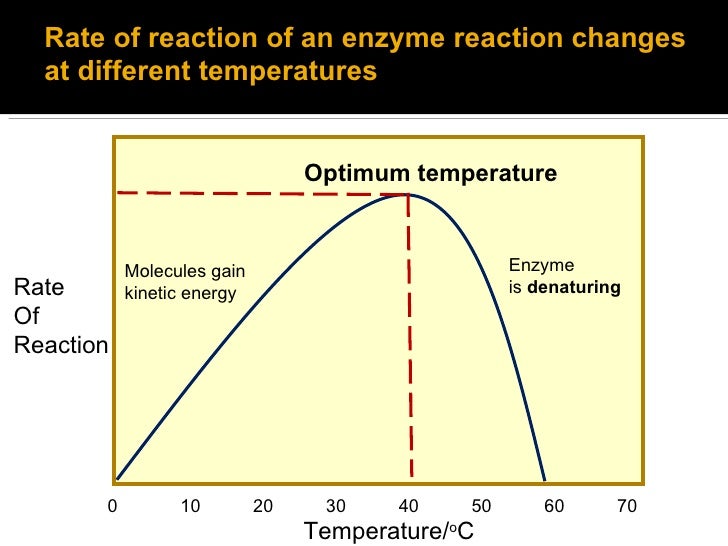
When the temperature increases beyond the optimum temperature, the rate decreases. The temperature at which the rate of enzyme catalyzed reaction is maximum is known as optimum temperature.
A ten degree centigrade rise in temperature will increase the activity of most enzymes by 50 to 100%. Besides, how does changing temperature affect the rate of enzyme activity?
This is because humans maintain a body temperature of about 37°c, therefore even temperatures exceeding 40°c will cause the denaturation of enzymes; Temperature can impact the rate of an enzyme reaction as they increase or lessening.
It Is Between Temperatures 20 Degrees Celsius To 60 Degrees Celsius.Independent variable temperature of each enzyme solution (water baths at 10°c, 20°c, 30°c, 40°c and 50°c will be used) At 10°c there was the least amount of glucose because the reaction rate is slower at this temperature, which means that we would have to leave the lactase enzyme in the lowest temperature for a longer time in order to get a higher glucose count. This is known as the q10.
Optimum Temperature •Each Enzyme Has A Temperature That It Works Optimally In, Which In Humans Is Around 37 Degrees Celsius The Normal Body Temperature For Humans.It is ultimately damaged by denature of an enzyme. It indicates how much the rate of reaction Molecules collide much faster as the temperature increases doing additions in the rate of a reaction.
This Is Because Humans Maintain A Body Temperature Of About 37°C, Therefore Even Temperatures Exceeding 40°C Will Cause The Denaturation Of Enzymes;The arrhenius activation energy, which describes the effect of temperature on the catalytic rate constant, k cat, and thermal stability, which describes the effect of temperature on the thermal inactivation rate constant, k inact. How temperature affects enzyme reaction rates claire garza february 13, 2017 abstract the intent of this lab was to determine if variations in temperature would alter the reaction rate of enzymes, and if so, how it was affected. High temperatures causes the hydrogen bonds between amino acids to break, changing the conformation of the enzyme
One Of The Critical Variables That Determine The Rate Of Any Reaction Is Temperature.The same effect can be obtained by physically stirring the ingredients. Many enzymes show curvature in plots of activity versus temperature that is not accounted for by denaturation or unfolding. Both entropy and enthalpy are temperature dependent.
A Ten Degree Centigrade Rise In Temperature Will Increase The Activity Of Most Enzymes By 50 To 100%.This experiment is therefore carried out to make out the factors which may influence the activities of the enzymes in their work of catalyzing the rates of reactions in the body. Besides, how does changing temperature affect the rate of enzyme activity? Optimal ph increases the reaction rate of the enzyme, whereas it reduces by less than optimal ph.
Belum ada Komentar untuk "Enzyme Reaction Rate Temperature"
Posting Komentar